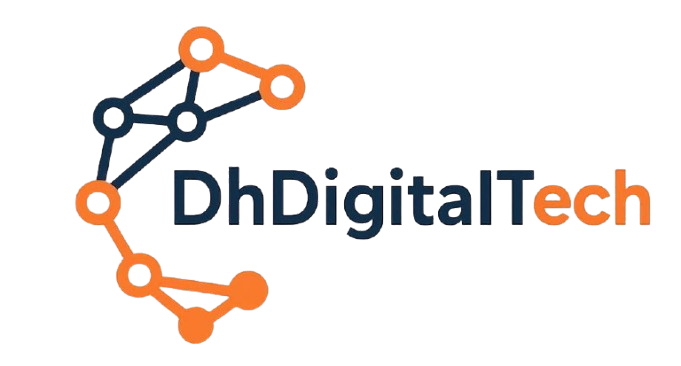Intech 2025: What’s next for the UAE and Africa?
As digital payments grow ~35% annually, the fintech future is embedded, intelligent, and inclusive. Discover the 3 big shifts every startup must prepare for: Embedded Finance, AI-Driven Compliance, and Financial Inclusion.
Ready to scale smarter? DhDigitalTech is here to help.
Introduction
The UAE is rapidly rewriting the rules of financial services. With the fintech market projected to grow from USD 3.16 billion in 2024 to USD 5.71 billion by 2029, digital payments and agile banking are at the forefront of this transformation.
For startups, fintech firms, tech professionals, and mobile/web developers operating across the UAE and Africa, understanding what’s next is essential. In this concise article, you’ll discover the three major trends shaping fintech in 2025: Embedded Finance, AI-Driven Compliance, and Financial Inclusion. By aligning your strategy now, you’ll position your business to scale smarter and faster. Let’s dive in.
- Embedded Finance: Banking Built Into Everything
Why it matters
- The UAE aims to be “90% cashless” by 2026, creating prime opportunities for fintechs offering embedded services.
- Digital wallet and payment services are expected to grow rapidly — the prepaid and digital wallet market is projected to reach USD 8.28 billion in the UAE by 2025.
Actionable points
- Integrate payments seamlessly: build APIs or partner platforms so finance functions become part of non-financial apps (e.g., e-commerce, mobility, healthcare).
- Offer microservices: embed lending, insurance, or payments into platforms – this lowers friction and boosts user engagement.
- Focus on tech stack agility: adopt a modular architecture to quickly roll out new services.
- Leverage local regulation: UAE regulators provide licenses/sandboxes (ADGM, DIFC) to accelerate innovation.
- Scale to Africa: Use the UAE as a hub to expand into African markets where embedded finance is still nascent.
Examples & context
A UAE-based fintech uses its payment wallet as an embedded checkout in a ride-hailing app. Meanwhile, in Africa, a digital bank offers embedded microloans inside a mobile wallet for gig workers. These models show how finance becomes invisible and integrated.
- AI-Driven Compliance & Intelligent FinTech Operations
Why it matters
- AI adoption in UAE financial services is accelerating; personalization, risk management, and compliance are key areas.
- Buy-Now-Pay-Later (BNPL) in the UAE is expected to grow by 15.6% annually to USD 2.84 billion in 2025. Robust compliance and risk analytics will be critical.
Actionable points
- Deploy machine learning for fraud & risk: use AI to monitor transactions in real-time and flag anomalies.
- Use AI for regulation (RegTech): automate KYC/AML workflows, improve reporting accuracy, and reduce manual overhead.
- Train your workforce: ensure your team (developers, data scientists, compliance officers) understands AI-powered tools.
- Partner with AI specialists: working with a provider like DhDigitalTech gives you access to proven frameworks and expertise.
- Prioritize data governance: ensure your data practices meet UAE regulatory standards before scaling AI solutions.
Examples & context
In the UAE, a digital bank deploys an AI-driven engine that cross-checks customer behavior across multiple channels, reducing risk and accelerating onboarding. An African fintech uses AI to analyze mobile data, enabling credit scoring for underserved users. These kinds of intelligent operations separate winners from laggards.
- Financial Inclusion: The Big Growth Frontier
Why it matters
- The mobile payments market in the Middle East & Africa is predicted to grow at a CAGR of ~30% through 2027.
- In Africa, many fintech solutions still target the under-banked. UAE fintechs with inclusive models can scale into this market easily.
Actionable points
- Design inclusive products: mobile wallets, micro-loans, remittance services – focus on accessibility, low cost, and local languages.
- Focus on partnerships: collaborate with telecom operators, retailers, and government programmers to reach underserved populations.
- Localize for Africa: use your UAE-based fintech expertise to serve African markets (regulation, local payment rails, mobile-first UX).
- Measure the impact: include metrics such as user growth in underserved segments, cost per onboarding, and retention of new users.
Examples & context
A UAE fintech partners with an African mobile operator to provide wallet-based remittances to East Africa. A startup offers insurance micro-products via embedded finance inside a retail app in North Africa. These inclusive models unlock new market sizes and user bases for fintechs.
Practical Implementation: Your 4-Step FinTech Ready Framework
- Audit & Strategy: Map your current services and identify one use-case in each trend area (Embedded Finance, AI-Driven Compliance, and Inclusion).
- Build & Pilot: Choose one pilot (e.g., wallet integration into app, AI risk engine, and inclusive micro-loan product). Use agile sprint cycles over 2–3 months.
- Train & Enable Your Team: Secure training for developers/analysts, partner with a Professional service firm (like DhDigitalTech) for guidance, and use sandbox regulation environments in the UAE.
- Scale & Expand: Use KPI dashboards – e.g., digital-payment volume, fraud reduction %, new user growth from underserved segments – then roll out across markets (UAE → Africa).
Tools & resources:
- Cloud AI/ML platforms (Azure, AWS)
- Open banking APIs (UAE Open Finance initiative)
- Fintech sandbox licenses (ADGM, DIFC)
- Training platforms for data science/AI
Common mistakes to avoid:
- Launching without regulatory alignment
- Lack of localized UX for users in Africa
- Treating AI as a plug-and-play instead of an iterative build & refine
- Focusing only on the UAE market – forget the broader Africa growth opportunity
Expected timelines & outcomes:
- 3–6 months: run pilot, train team, test product
- 12–18 months: scale product in the UAE and pilot in one African market
- 24+ months: cross-regional scale, measurable user growth, improved unit economics
Conclusion
FinTech in the UAE and Africa is evolving fast – and the winners will be the firms that act now. Embedded finance, AI-driven compliance, and inclusive models are the three big shifts reshaping the landscape. By equipping your team, leveraging agile platforms, and aligning with regulatory frameworks, you position your startup or fintech for growth in 2025 and beyond. At DhDigitalTech, we partner with fintechs to build readiness, scale smarter, and unlock new markets.
Explore our full insights and find out how we can help your business thrive. 👉 Explore full insights →






